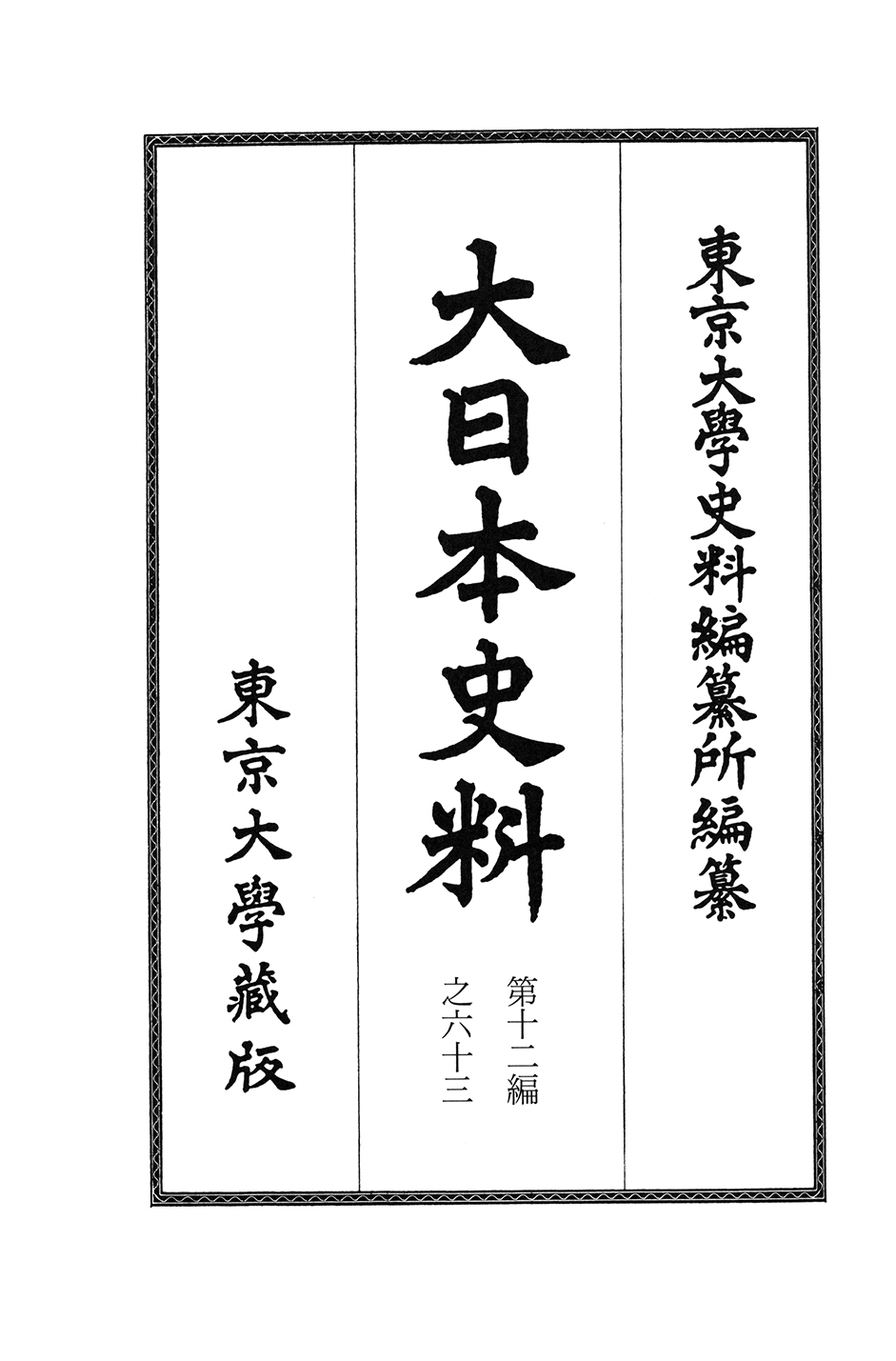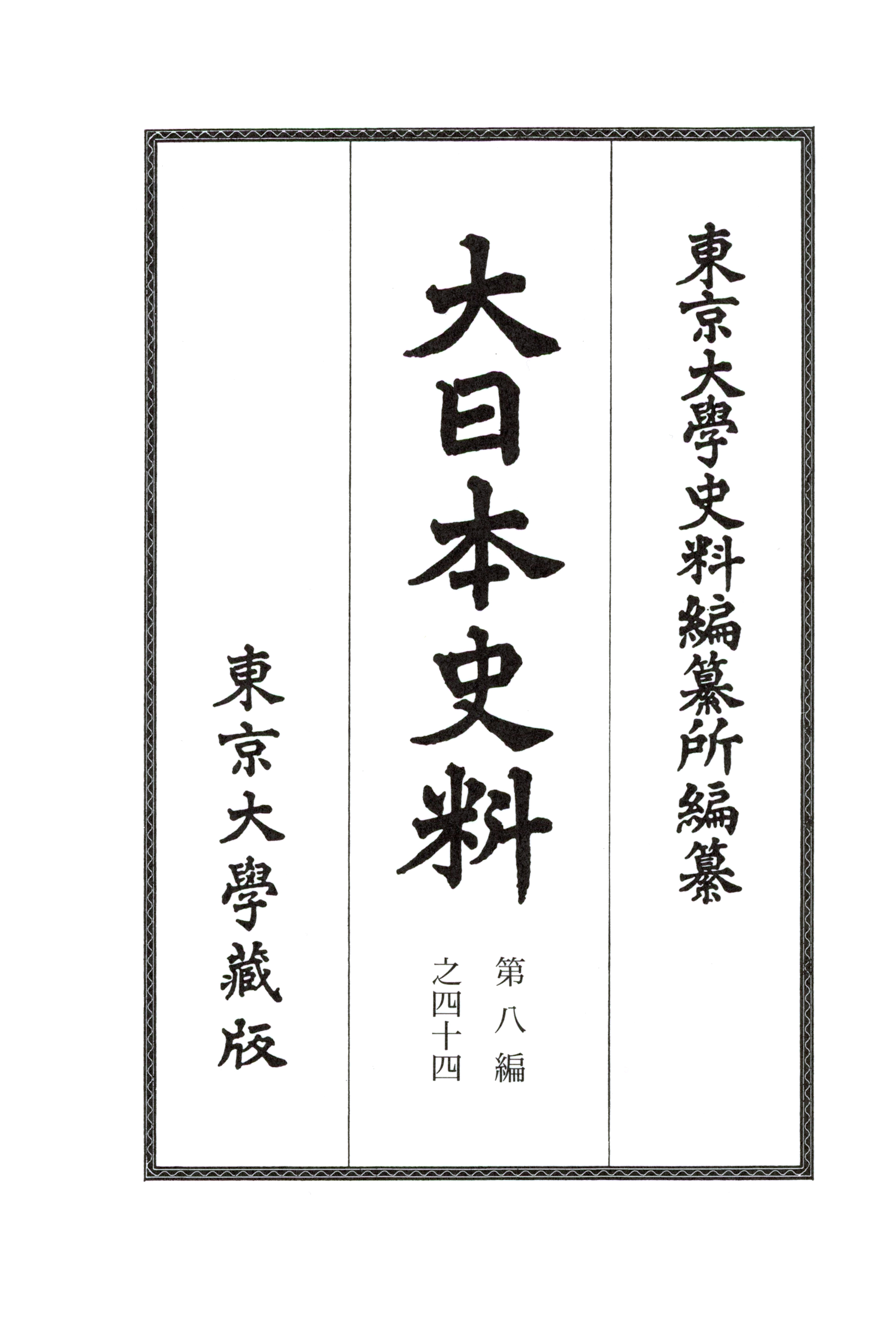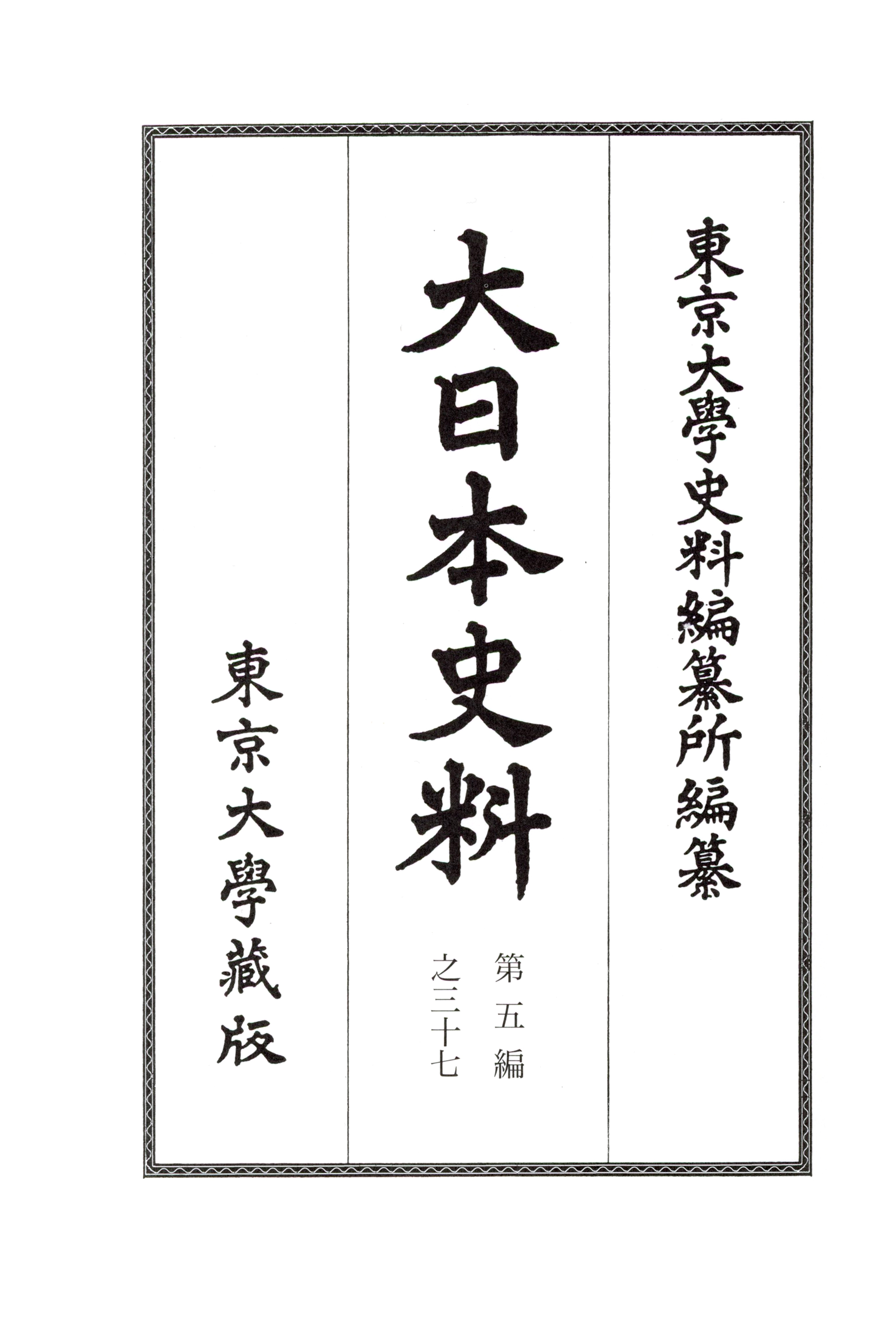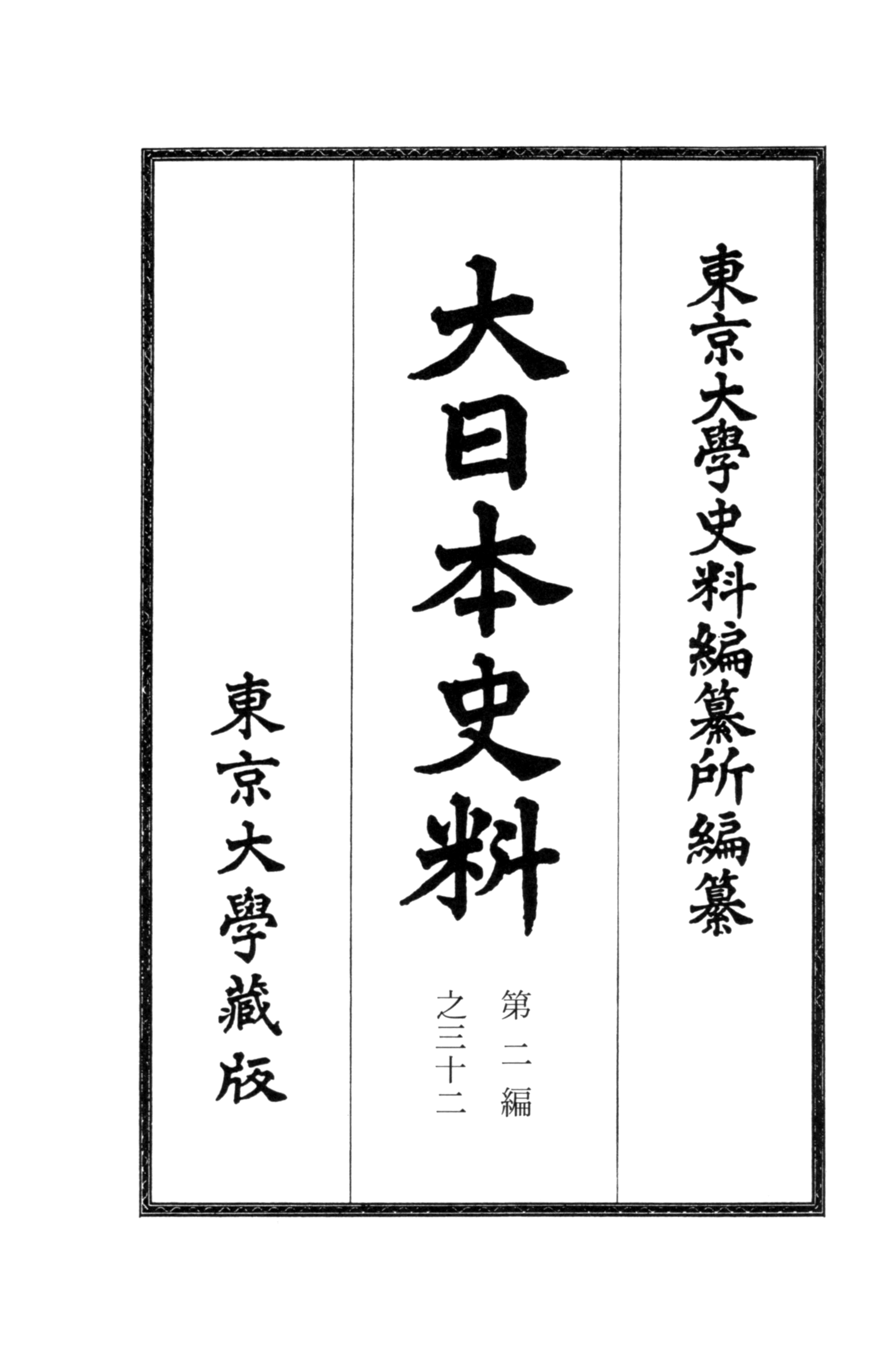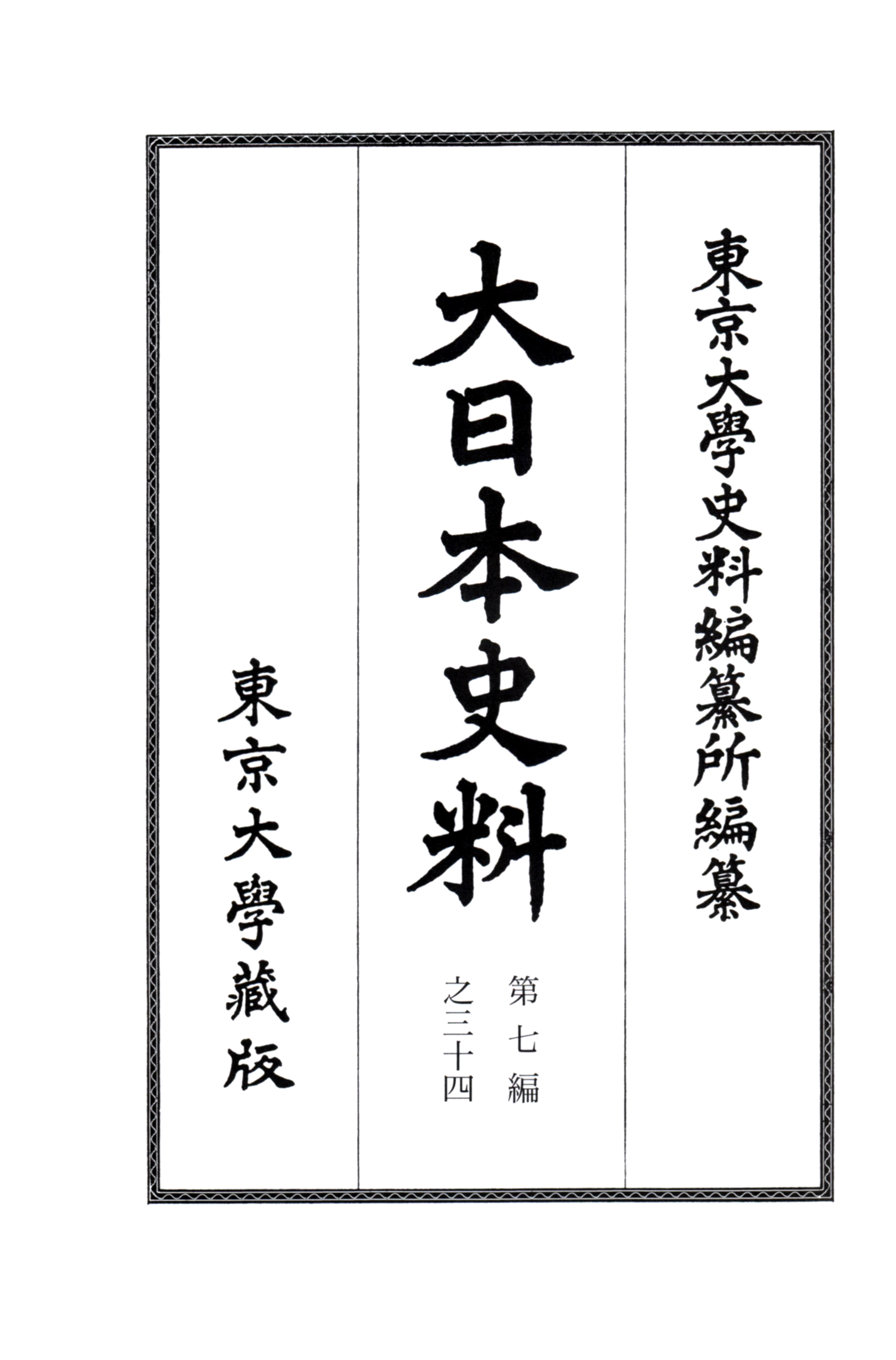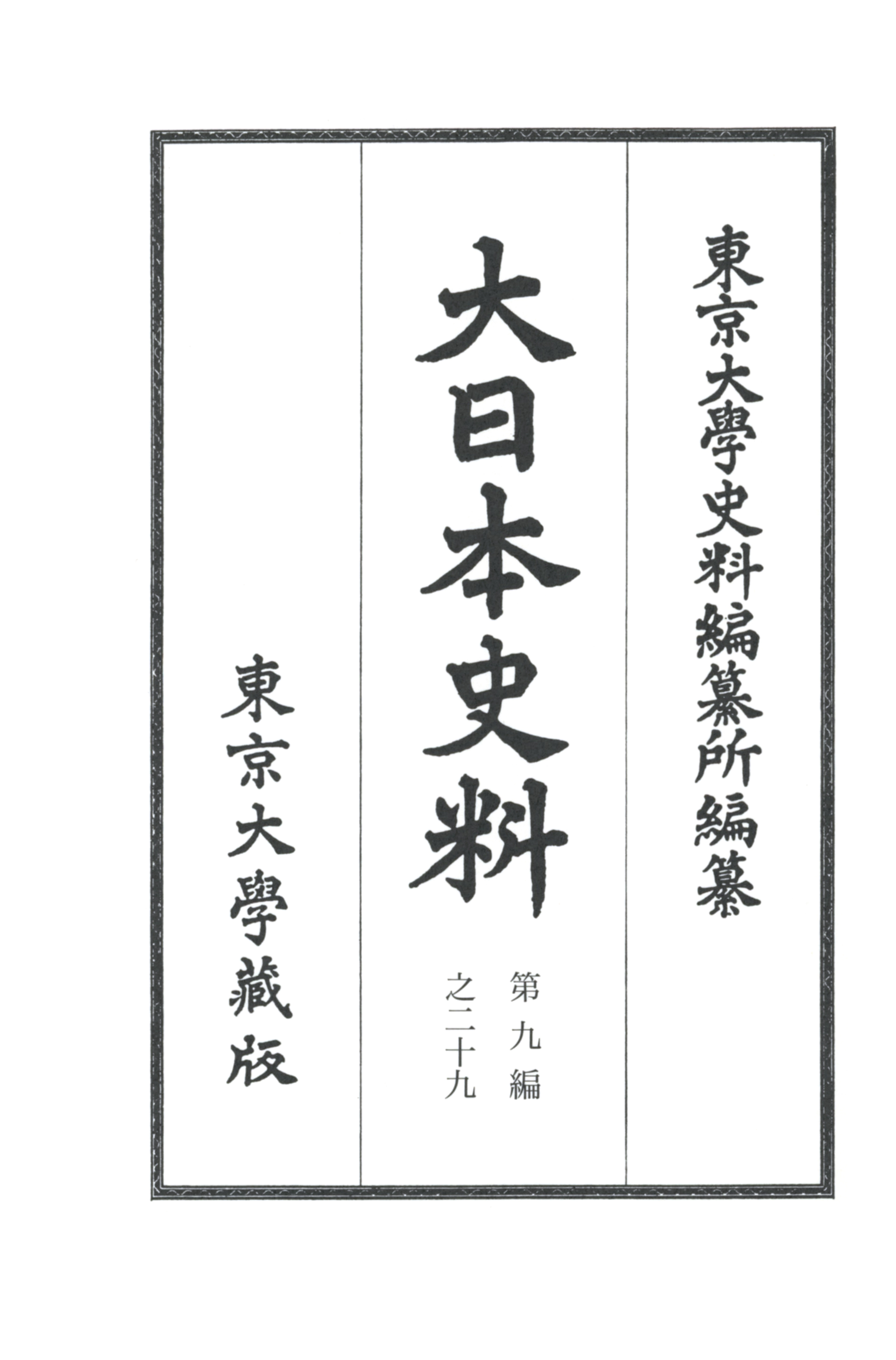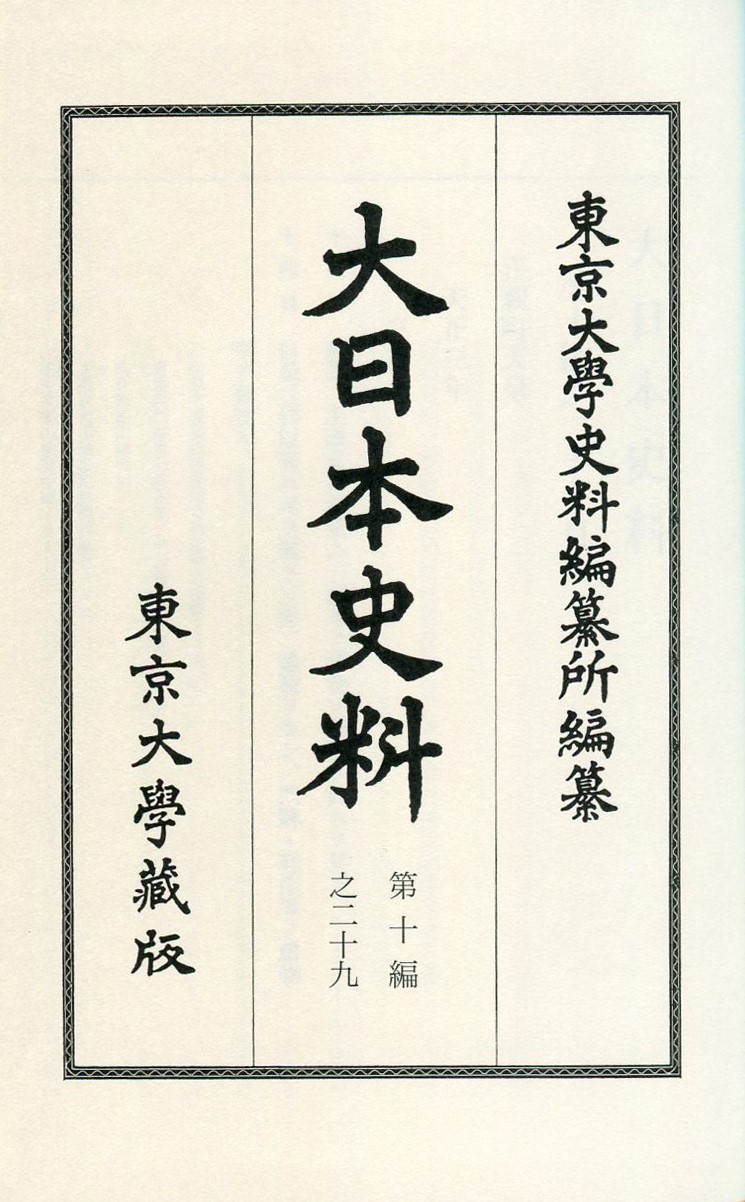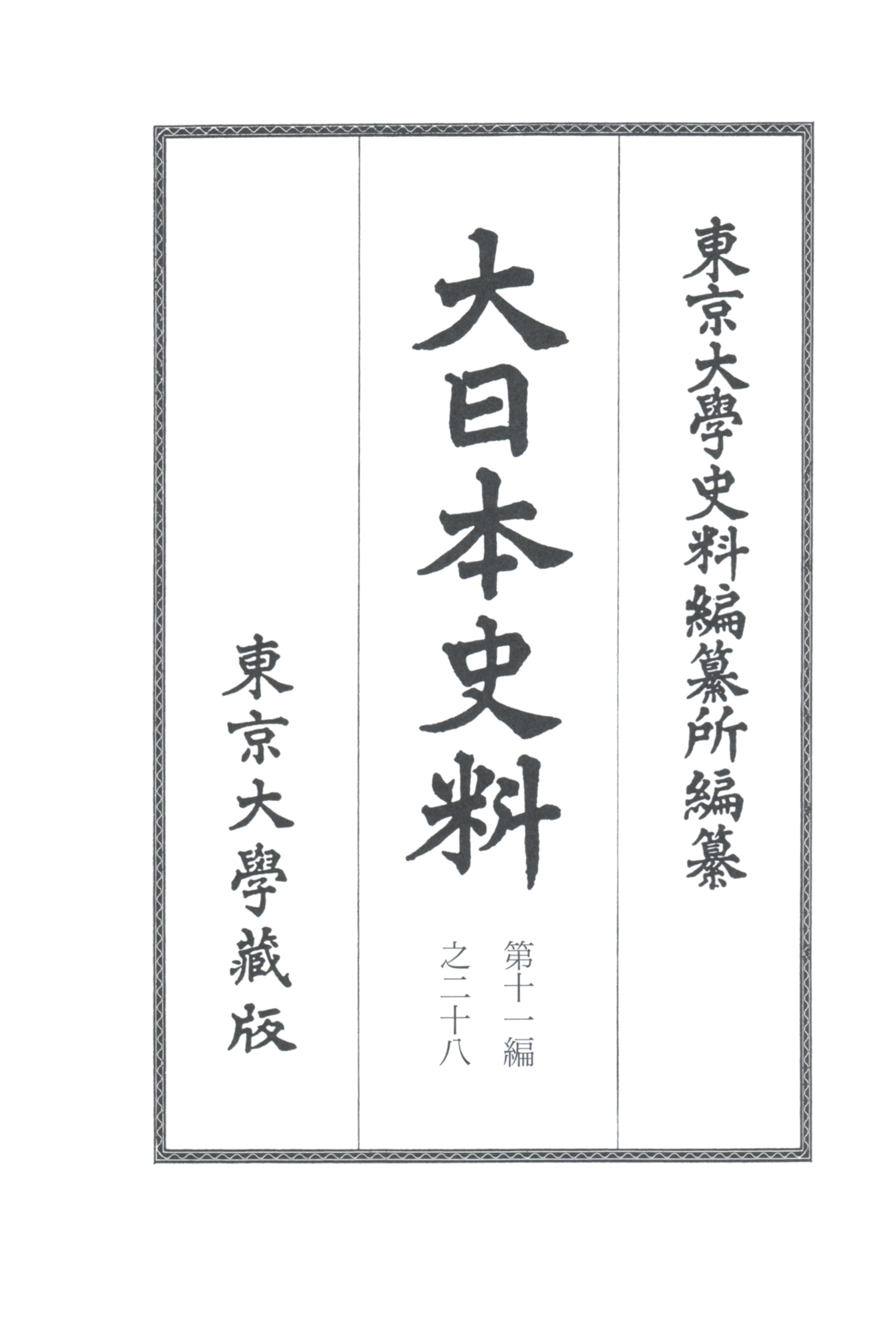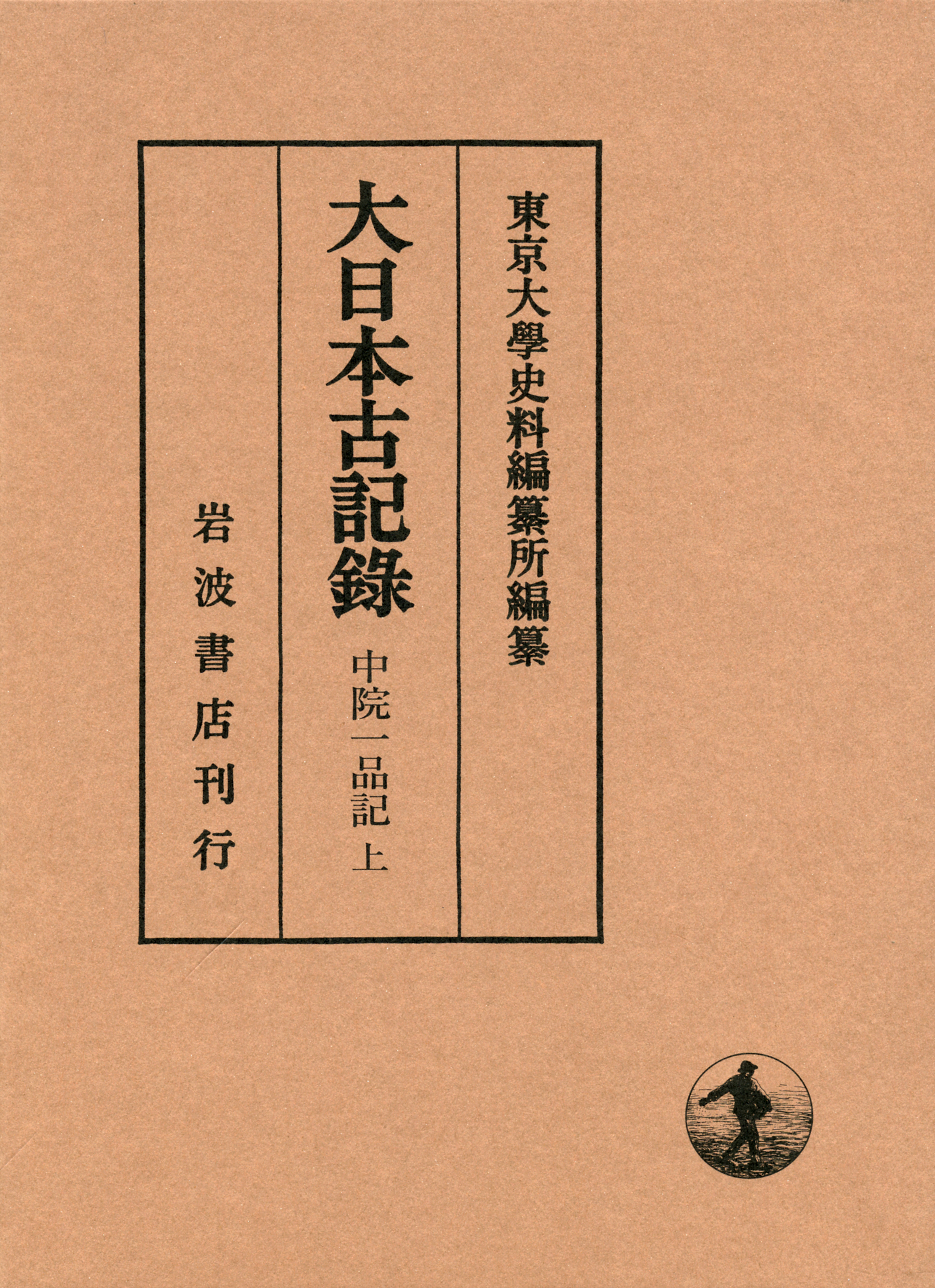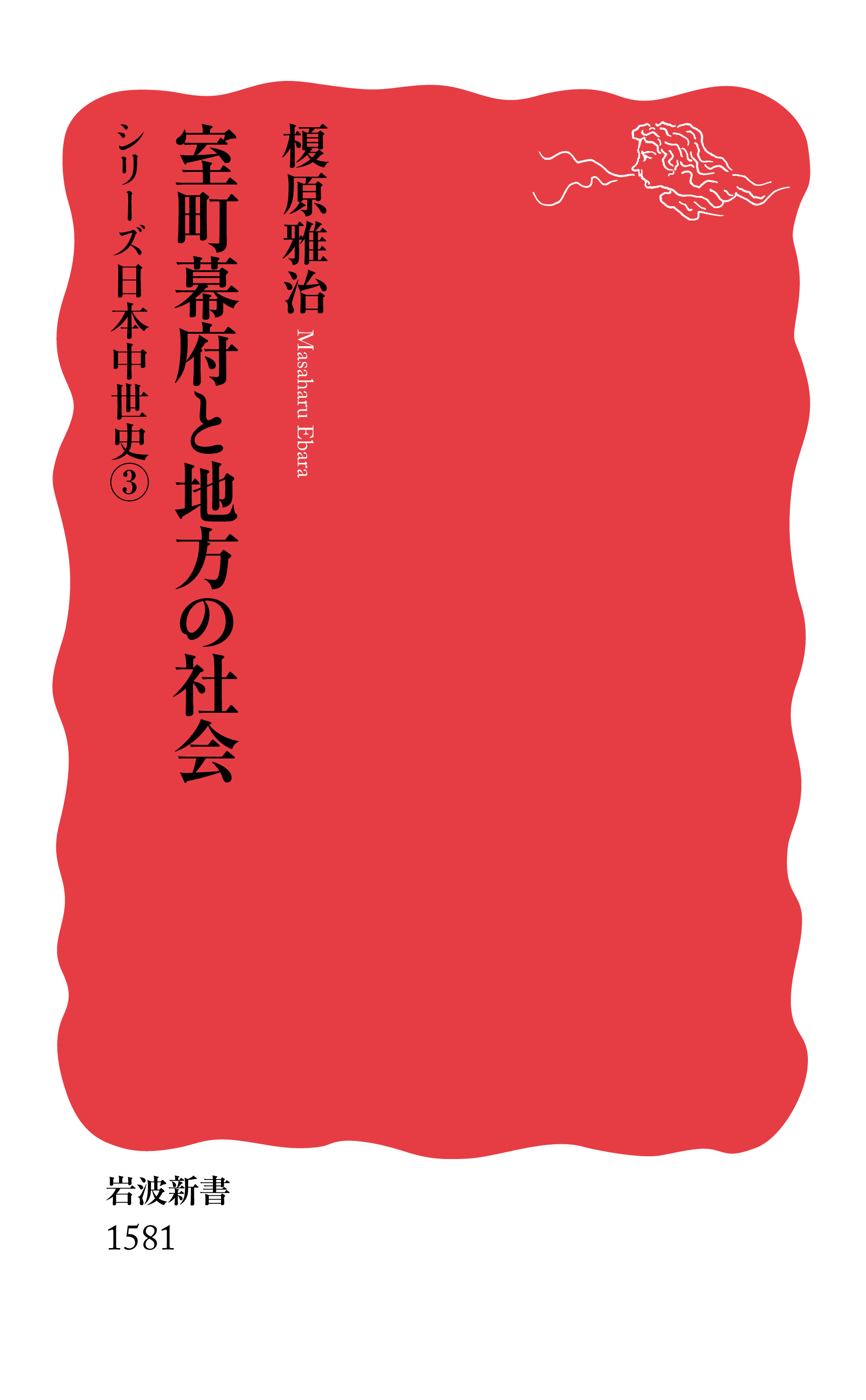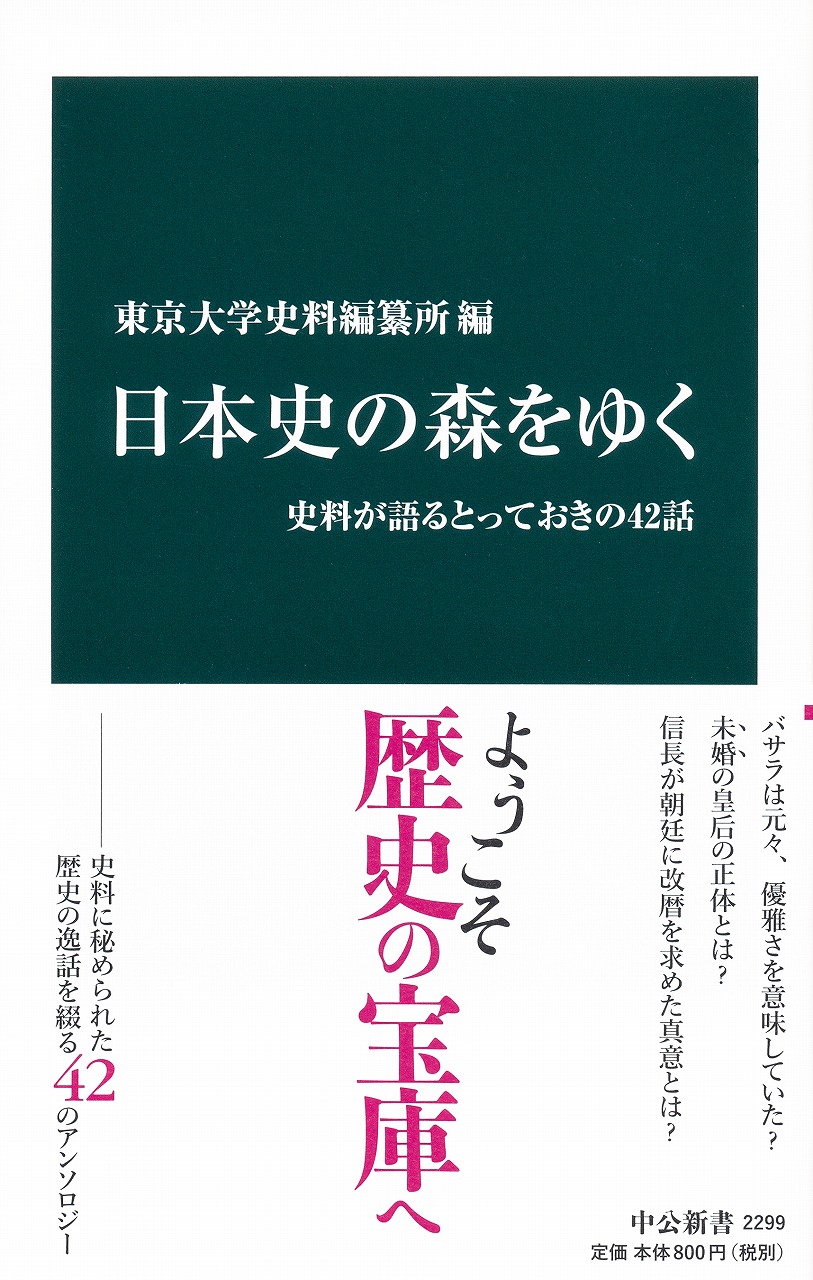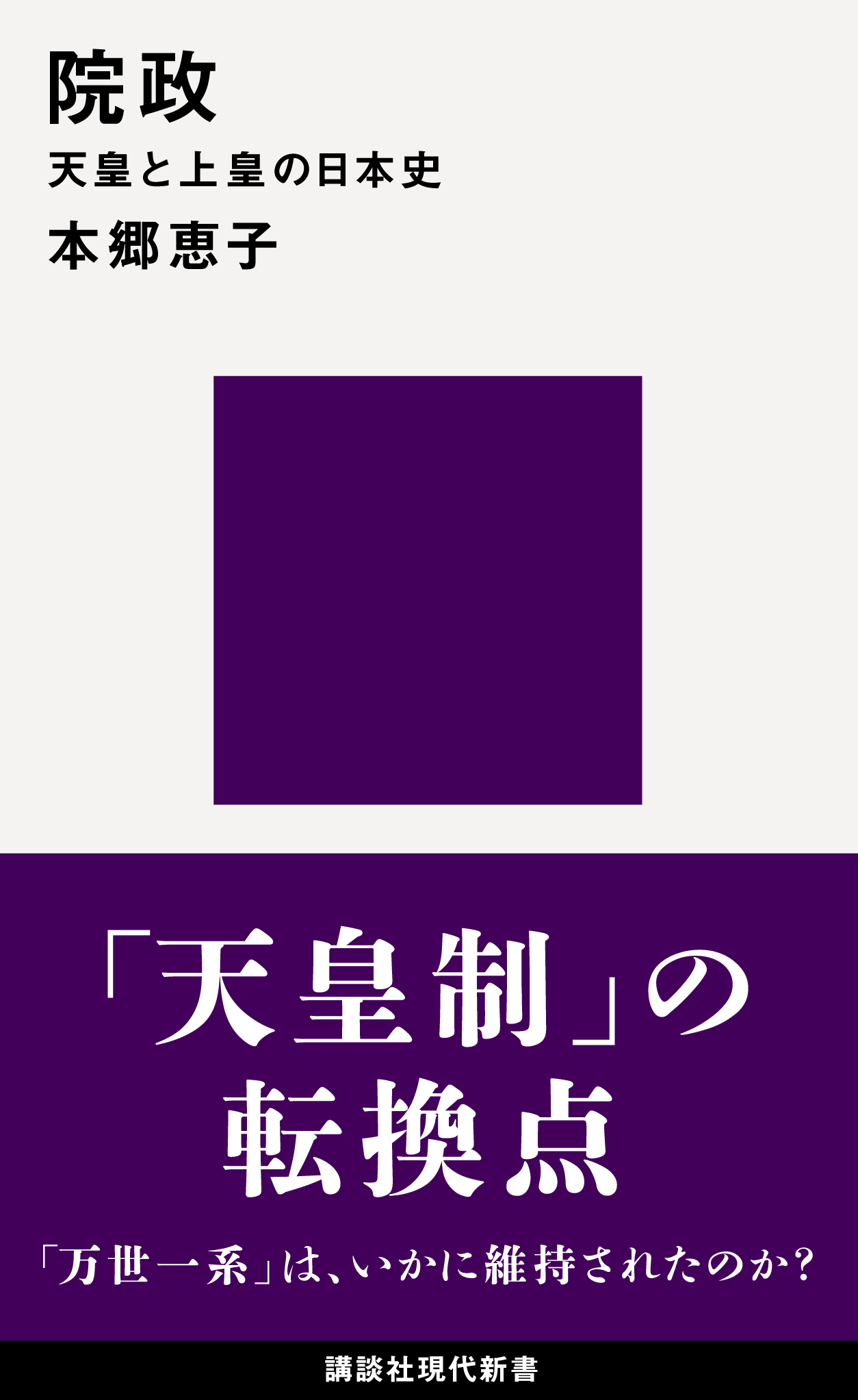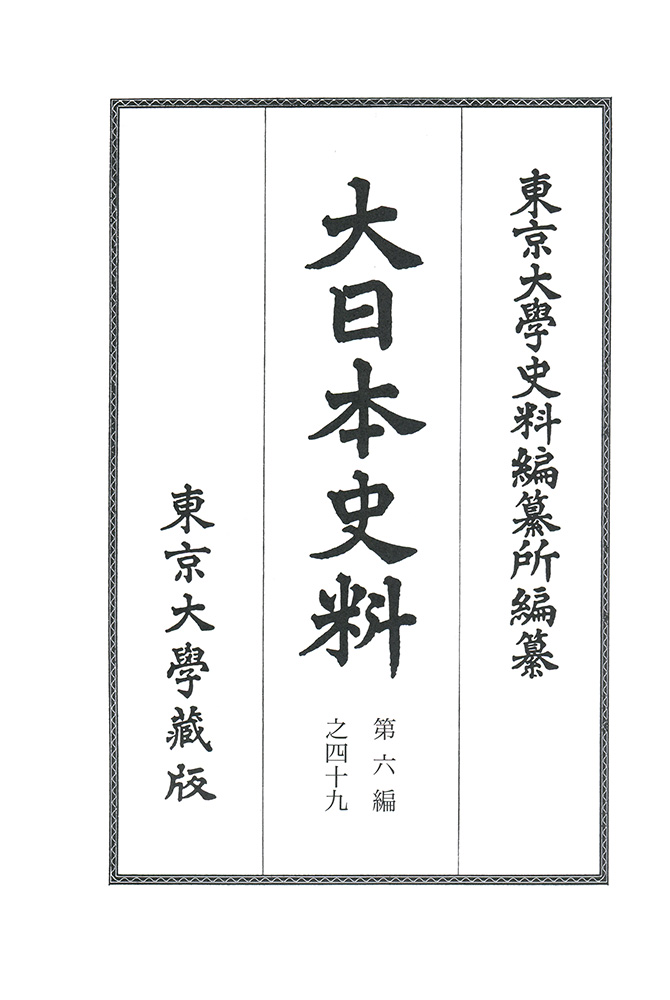
Title
Dai-Nihon Shiryo: Dai 6 no 49 (Chronological Source Books of Japanese History: Volume 6, Number 49)
Size
468 pages, A5 format
Language
Japanese
Released
March, 2016
ISBN
978-4-13-090299-1
Published by
University of Tokyo Press
Book Info
See Book Availability at Library
Japanese Page
The Chronological Source Books of Japanese History is one of the collections of Japanese historical materials compiled and published by the University of Tokyo Historiographical Institute. The history contained within the Rikkokushi, a series of six ancient Japanese historical collections that begins with “Nihon Shoki,” ends in the third year of the Ninna period (887). The Chronological Source Books begin here and cover the following 980 years until the third year of the Keio period (1867). The compilation of this history has been divided into 16 volumes, and work thus far (11 volumes) has taken readers up to the Edo period (where Volume 12 begins). The sixth volume begins with the collapse of the Kamakura shogunate in the period of the Northern and Southern Courts (i.e., the third year of the Genko period, 1333) and deals with the Kemmu Restoration carried out by Emperor Go-Daigo, the establishment of the Muromachi shogunate, and—through the coexistence of two emperors and their two courts—the process of reuniting the Northern and Southern Courts in the third year of the Meitoku period (1392).
The Chronological Source Books of Japanese History are organized by compiling outlines of a variety of events and occurrences into a concise text known as a kōbun. These outlines are then placed on a timeline, accompanied by listings of the historical materials that form the basis of each kōbun. Volume 6, Number 49 deals with events occurring between the end of the second year of the Eiwa period (1376) and August of the following year. For instance, on January 8th of the third year of the Eiwa period (1377), one kōbun reads, “The Northern Imperial Court enacted the Goshichinichi no Ho and the Taigen no Ho, and stopped the Gosaie.” These were prayers carried out at the Imperial Court requesting security for the emperor and the nation. Continuing with the kōbun, there is also information about the enactment and suspension of each service taken from the diaries of nobles and descriptions of the content of each service from ancient documents and records. Much has been transmitted to us through historical materials connected to Kyoto’s Daigo-ji Temple. Detailed information that is abundantly available in these materials includes the procedure of the service, the condition of the venue, the ritual implements that were used, descriptions of the priests’ costumes, and an itemization of various expenses, including the compensation paid to participants. Other events recorded during this period include the birth of the first son of Emperor Go-En’yu, battles in Kyushu between the armies of the Northern and Southern Courts, a compilation of waka poetry composed in the Southern Imperial Court, and conflicts within the shogunate between the Hosokawa and Shiba clans. Additionally, biographies of those who died during this period are being produced for inclusion in the Chronological Source Books. Using historical materials that provide evidence pertaining to the public and private lives of individuals, such as family trees, personal histories, works of poetry and literature, portraits, anecdotes, and so on, we attempt to reconstruct complete pictures of subjects’ lives.
Historical materials that describe natural phenomena and actions by people that cannot be summarized in the kōbun are classified and recorded as nenmatsu-zassai, or “Year-End Miscellaneous Notes,” at the end of each year under various headlines such as “Weather and Natural Disasters,” “Shrines and Temples,” “Arts,” and so on. The “Year-End Miscellaneous Notes” for the second year of the Eiwa period (1376) in Volume 6, Number 49 features items such as “Contributions,” “Trade,” and “Land Tax.” It is clear both by whom and in what manner the shoen manors and shoryo territories—which were set up throughout Japan and which formed the basis for production—were controlled and managed. This information makes it possible to determine contemporary economic structures and regions and trends in populations.
Chronological Source Books of Japanese History: Volume 6 was the earliest work to be published by the Historiographical Institute, and its publication goes back to the 34th year of the Meiji period (1901). This work is a comprehensive compilation of historical materials not only from studies of history, but also from a wealth of fields that include literature, religion, and the arts. Its contents have been carefully examined and collated in book form and are available to anyone who wishes to learn about the past and consider the future. Today, the results of this work can mostly be accessed from the Historiographical Institute’s database (http://wwwap.hi.u-tokyo.ac.jp/ships/), which may be freely consulted.
(Written by HONGO Keiko, Professor, Historiographical Institute / 2017)



 Find a book
Find a book



